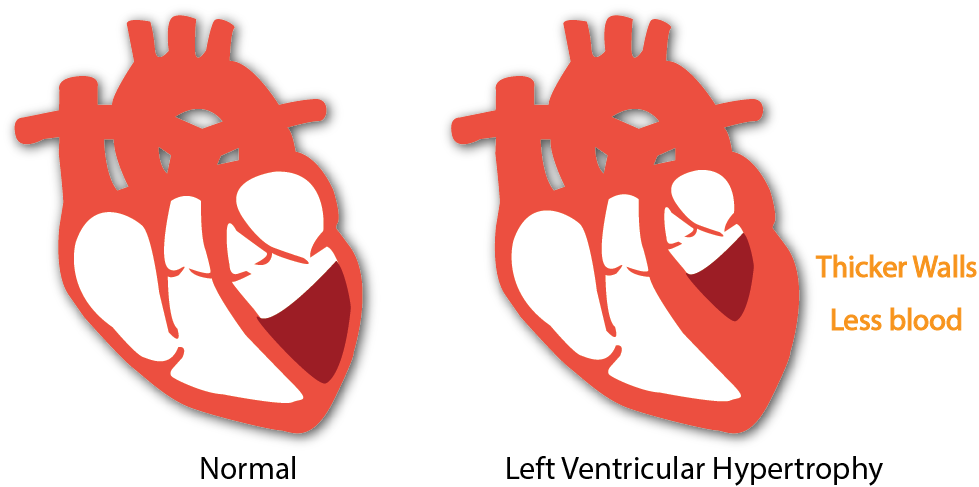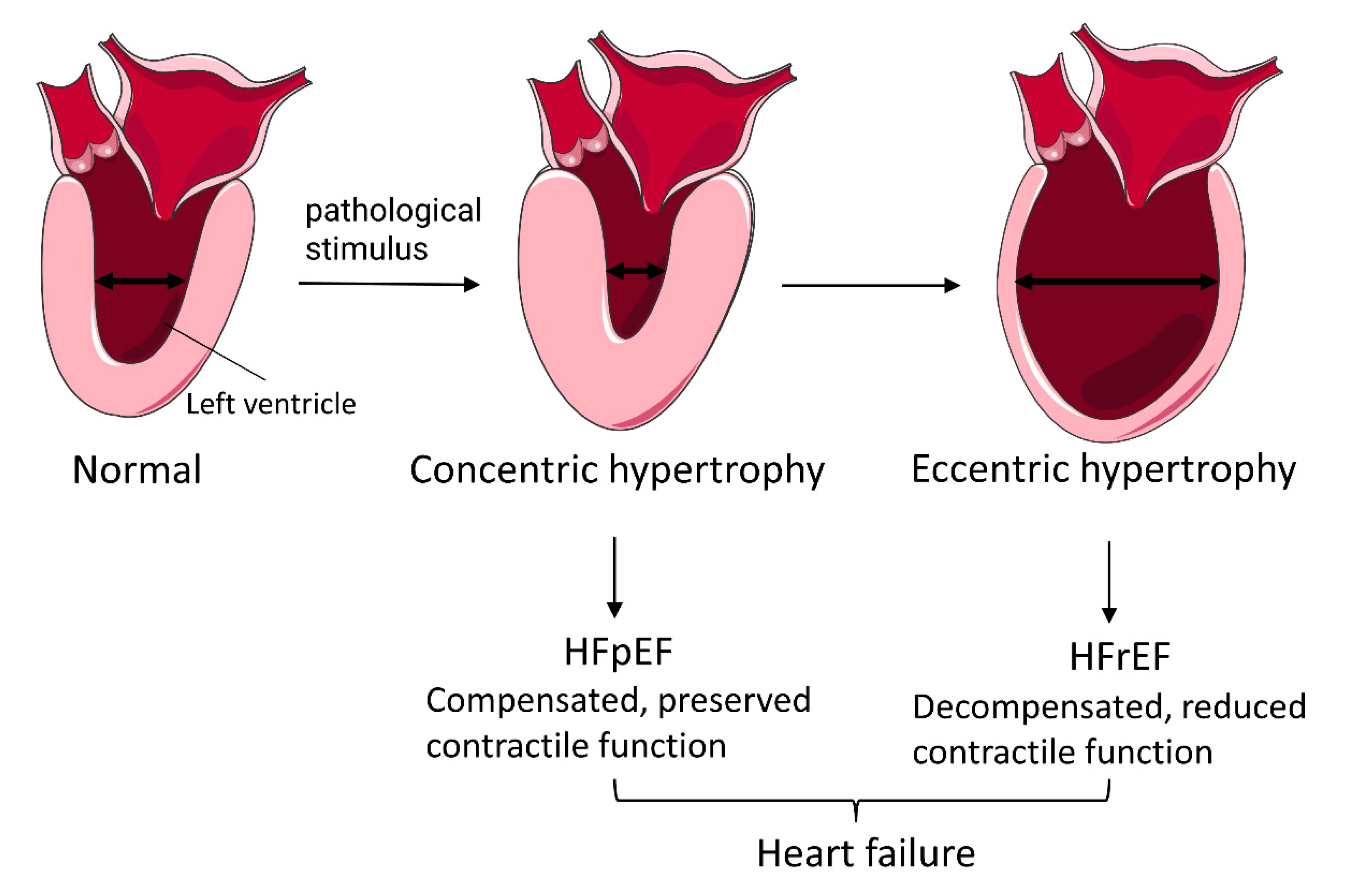Cardiac Dilatation and Hypertrophy:
- Cardiac enlargement is compensatory response to persistent increased workload that are associated with cardiovascular disease.
- Heart may respond by dilatation, hypertrophy or combination of both.
Cardiac hypertrophy:
- Cardiac hypertrophy refers to increase in muscle mass of myocardium.
- It is due to increase in size of cardiac muscle cells. These are generally secondary in nature and results as compensatory response to increased workload.
- 2 forms of hypertrophy are recognized; eccentric hypertrophy and concentric hypertrophy

Eccentric hypertrophy:
-
- Eccentric hypertrophy is generally regarded as healthy, or physiologic hypertrophy and is often termed “athlete’s heart.”
- Eccentric hypertrophy results in a heart having enlarged ventricular chambers and walls of normal or decreased thickness.
- It is produced by lesions that increase blood volume load, such as valvular insufficiencies and septal defects.
Concentric hypertrophy:
-
- Concentric hypertrophy is a hypertrophic growth of a hollow organ without overall enlargement in which the walls of the organ are thickened and its capacity or volume is diminished.
- In case of cardiac concentric hypertrophy, heart has small ventricular chambers that have thick walls.
- It occurs from lesion that increase pressure load such as valvular stenosis, systemic hypertension, and pulmonary disease.
